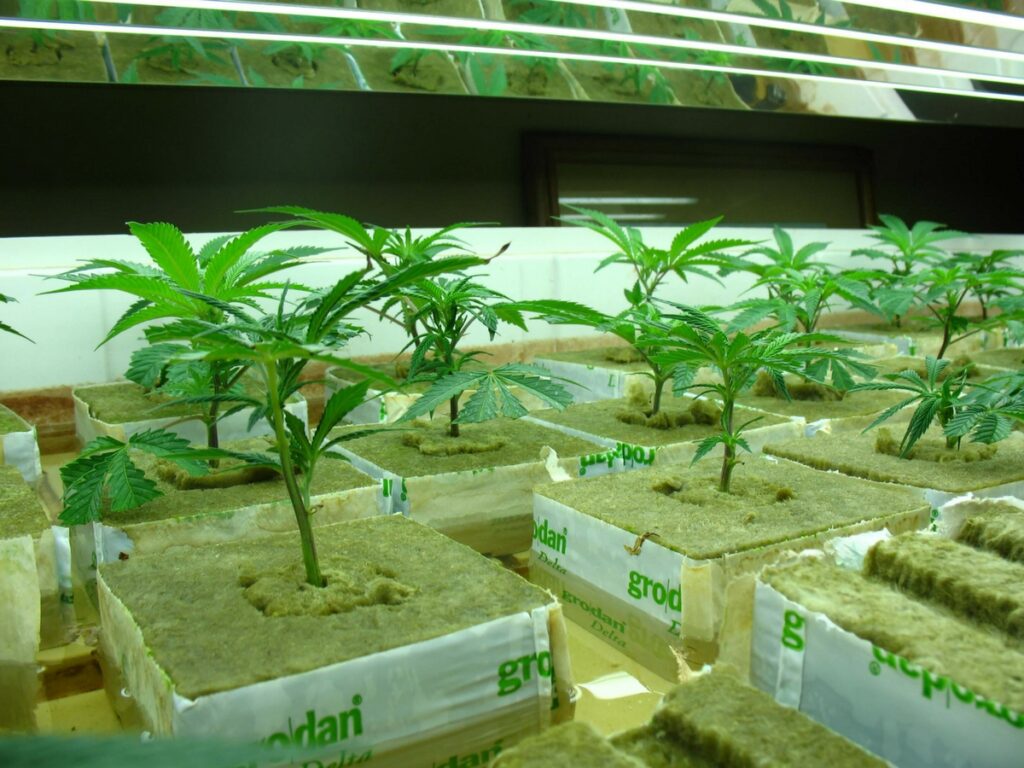
Osmotic processes
With osmosis, we mean the processes in which water and nutrients are absorbed by plants. Osmosis is based on the principle that the plant’s walls permit some materials to pass through, and others not. Cell walls are semi-permeable. An example: when we place a bladder with a sugar solution in a tank of water, the bladder swells. The sugar solution attracts the water. The more sugar in the solution in the bladder, the more water will be absorbed, and the pressure in the bladder will rise, but don’t try this at home! Among other things, osmosis provides for the sturdiness in plants’ cells. So much water is taken in that the plant cells become saturated, and the stalk and the leaves stand upright. If too little water is in supply, the plant cells give off the water; slowly, but surely. The strength is lost, and the plant wilts. Another way for a plant to lose its sturdiness is for osmosis to work in the reverse direction. If there is too high a concentration of materials in the water fed to the plant, the plant will not absorb water. It will release water, and become less sturdy. An example is the addition of too high a dosage of fertilizer to plants. With over-fertilization, plants dry out and burn . . . A second important function of osmosis is the ‘hitch-hiking’ of salts (nutrients) together with the water that, through osmosis, ends up in the plant cells. Nutrients are necessary to allow certain growth processes to take place. The salts also cause various kinds of plants to develop various properties. That brings flowers, fruit, and fragrances to mind. In general, plants need the following materials in a water solution: – nitrogen, phosphorus, and sulphur for the construction of cells; – magnesium to manufacture chlorophyll; – potassium, calcium, and magnesium for osmotic processes; – water for growth, for the transport of nutrients, and for sturdiness; – iron, boron, copper, manganese, and zinc as building materials. Most of the nutrients for plants are sufficiently present in our ordinary tap water. But not all The law of minimums plays a great role in the feeding of plants. Material that is present in too small a quantity is a limiting factor on the plant’s health. So-called ‘deficiency disease’ appears when a plant does not receive one or more nutrients. For example, a shortage of iron causes rather white leaves, while a shortage of nitrogen causes reduced growth and yellowed leaves. ‘deficiency disease’ involves not only the direct effect (an unhealthy plant doesn’t grow well), but also impaired resistance. If needed materials are lacking, the chance for infection by moulds and vermin increases. We will discuss plant diseases more extensively in a later chapter. In order to raise healthy plants, we need further amplification of the materials which, by nature, appear in our water. This involves primarily nitrogen (N), phosphate (P), and potassium (K). A formulated combination of these materials is available in shops, and is called ‘NPK solution’. We differentiate the different nutrients in order of importance. We call the most important the primary nutrients; – the NPK combination just mentioned. The secondary nutrients follow; namely magnesium (Mg), and calcium (Ca). Finally, there is a group of micro-nutrients, also called trace elements. Sulphur (S), iron (Fe), manganese (Ma), boron (B), zinc (Zn), and copper (Cu) belong to this group, among others.

